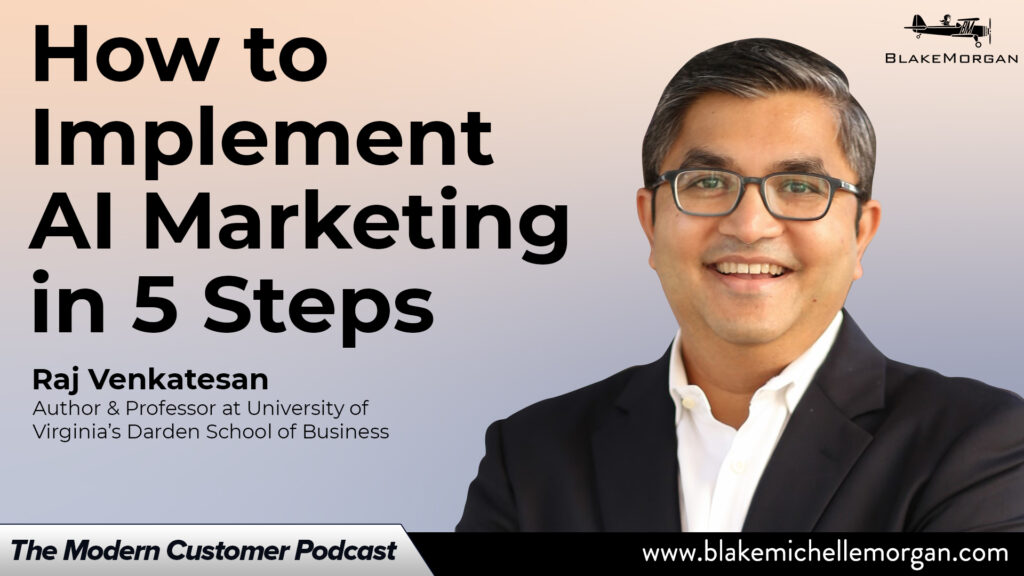The future of marketing is artificial intelligence.
But marketers are often faced with technical jargon and code instead of tactical ways to improve their strategies. Author and marketing professor Raj Venkatesan says marketers don’t have to know how to code, but they do need to understand the concepts of AI to build smart strategies and deliver superior customer experiences.
In his new book, The AI Marketing Canvas, Venkatesan breaks it down to a five-stage road map of how to implement AI in marketing.
Before embarking on that roadmap, marketers need to understand the goal of AI in marketing, which is to personalize customer engagement. With that mindset and understanding, marketers can embark on the five-stage AI journey:
- Create a foundation of data. Personalizing customer engagement and delivering great experiences starts by building the algorithms needed to make predictions about consumers.
- Experiment. Choose one customer engagement issue, such as customer acquisition or retention, and test what gains you can obtain through AI personalization. Venkatesan recommends running several small experiments to see which area delivers the strongest results for your company because each organization will see different impacts in different areas.
- Expand. Use that experiment as a launchpad to look at adjacent data. Take success in one area of customer engagement and expand AI into neighboring areas to grow in all aspects of customer engagement.
- Transform. As you expand your AI efforts to all areas of customer engagement, your entire customer experience will be transformed through AI.
- Monetize. Create a platform and develop a new revenue source. Companies like Starbucks are creating monetized versions of their AI marketing strategies and programs to help competitors. Sharing a platform speeds the adoption of AI across industries and can create lucrative revenue streams.
As they go through these five stages, modern marketers need to be able to work with different functions in the organization and be the voice of the customer to bring together AI and marketing and deliver a great customer experience.
Venkatesan says the fundamentals of marketing and customer experience haven’t changed—what has changed is the ability to serve customers well at scale. AI is an opportunity to serve customers better. When marketers embark on these five steps, they can lead their organizations and their customers to better experiences through AI.
_________________
Blake Morgan is the bestselling author of The Customer of the Future. Join the waitlist now for the new Customer Experience Community here.

